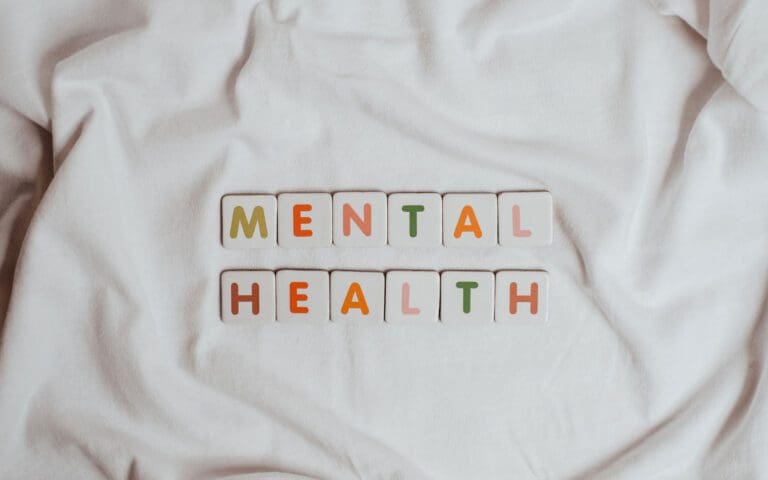Mental Health Awareness Week serves as a reminder to prioritise mental well-being and support those struggling with mental health challenges.
In this article, we spoke to six industry experts to gather their valuable insights and suggestions for leaders looking to foster a mentally healthy environment for their employees, particularly as we explore a Deep Dive into Language Learning Models ‘LLM’ to support diverse needs.

A BURDEN TO US ALL
The current mental health situation is a cause for concern. Marco Fanizzi, Corporate SVP & GM at Commvault International, observes: “There seems to be a global epidemic of burnout across every level of business.”
“It’s not exclusive to high-profile roles or specific generations anymore.”
“There’s a commonplace trend that people feel they have ‘nothing left in the tank.”

Numerous tumultuous events over the last few years have added to these stressors. As Terry Storrar, Managing Director at Leaseweb UK, highlights, “from a worldwide pandemic to a cost of living crisis, for many of us, it’s been a hard few years to say the least. Subsequently, it’s no surprise that many people’s mental health has suffered. The Royal College of Psychiatrists recently reported that 2022 saw a record number of referrals for mental health services in England: 4.6 million referrals during 2022 (up 22% from 2019).”
THE ORGANISATIONAL EFFECT
This growth in mental health issues has been encouraged by the organisation’s pursuit of productivity. Marco Fanizzi explains that organisations that constantly drive for better productivity and encourage an ‘always on’ culture are putting employees at risk.
“It is a risk when teams are not disconnecting as their roles are becoming all consuming. We find this impacts their thinking and planning ability as they don’t have quiet moments any more.”
“Even car and train journeys are taken up with devices and notifications.”
“This expectation is impacting concentration levels across organisations and in turn has a direct correlation on mood. There is a constant feeling of pressure.”
Gillian Mahon, Chief People and Places Officer at Totalmobile, agrees, “the professional landscape, all too often, becomes a breeding ground for anxiety. For many, this is sparked by an unmanageable workload, vague role definitions, mismatched promotions, and the delicate dance between work and personal life demands.”
Focusing on the impact of declining mental health on work life, Leaseweb UK’s Storrar notes, “Without supportive environments that encourage employees to prioritise and talk about their mental well-being, the workplace can become a contributing factor.
In fact, St. John’s Ambulance found that one in four people had left a job due to mental health and well-being issues. What’s more, almost half (44%) had considered leaving their job for this reason.
A SYMBIOTIC CULTURE
Whilst organisations can play a role in declining mental health, they can also make changes to promote communication, understanding, and acknowledgement of the issue. By establishing a supportive culture, companies can promote mental well-being in the workplace.

Dave Birchall, Chief People Officer at Node4, emphasises the importance of establishing a positive culture, stating, “All organisations should be establishing and promoting a culture of empathy and understanding so that, should an employee be struggling, they feel comfortable in asking for help.”
“There are simple ways to achieve this,” he adds, “such as offering flexible working, encouraging managers to have regular informal check-ins with all employees, or a monthly coffee morning for people to connect and bond. More targeted support could be to provide tips and techniques to help tackle anxiety and manage stress, and to offer access to professional support services.”
Developing an empathetic culture also involves ensuring leadership teams are equipped to manage conversations around wellbeing. Research shows that most managers worry about using the wrong language when addressing sensitive issues like ill mental health.

Agata Nowakowska, AVP EMEA at Skillsoft, suggests: “Training managers on how to spot signs and symptoms of ill mental health and workplace triggers, as well as best practices for reaching out and offering support, is key. This is particularly important for those managing remote or hybrid teams.Organisations should address common root causes of mental health issues through education, empowering managers and employees to turn this conversation around.”
She adds, “supplementing training with frequent manager check-ins, mentorship opportunities, and access to mental health resources will also help build a supportive work environment.”
Forming a positive culture, combined with flexible and remote working practices, can help to reduce the mental strain on employees. As Totalmobile’s Mahon expands.“Flexible working serves as a lifeline for those who carry additional responsibilities outside of work, such as parenting or caregiving. By granting employees the autonomy to blend their work and personal lives, we are not just encouraging them – we are empowering them to perform at their full potential without compromising their personal needs or pursuits.”
TAKING THE PSYCHOLOGICAL, DIGITAL

Whilst organisations have a duty to support mental health, they also require tools to do so. Technology can play a significant role in addressing mental health challenges and providing innovative solutions to this issue. Oleksandr Maidaniuk, VP of Technology at Intellias, highlights the potential of technology in overcoming barriers to seeking help for mental illness: “A chatbot may be the resource that helps people finally acknowledge it is time to seek additional help. Chatbots have been increasingly used to screen and assess individuals for mental health problems, such as depression or anxiety. IoT-powered wearable devices are leveraged by healthcare providers to monitor the physiological symptoms of their patients, such as heart rate and sleep patterns, that can be indicators of mental health issues.”
“Additionally, combining AI and VR technology enables simulating environments that trigger anxiety or other mental health symptoms, allowing individuals to practise coping skills in a safe setting controlled by a doctor. All the above-mentioned use cases pave the way to developing personalised evidence-based therapeutic interventions, including cognitive-behavioural therapy (CBT) or mindfulness-based stress reduction (MBSR).”
Mental Health Awareness Week provides the perfect opportunity to kick start discussions around mental health and implement such policies if not already in place. However, “these initiatives should be available and active all year round,” Node4’s Birchall concludes. “Mental health must be a priority for all 52 weeks of the year.”








